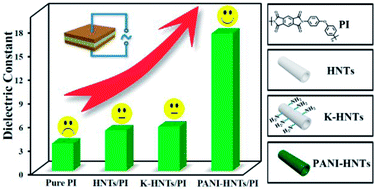Dielectric fluids with higher dielectric constants such as electrical grade castor oil are often used in high voltage capacitors to help prevent corona discharge and increase capacitance. Capacitance within the speci ed tolerance measuring temperature.

Capacitor Ceramics An Overview Sciencedirect Topics

Bojack 0 1uf 50v Ceramic Disc Capacitors 100nf Low Voltage High Dielectric Constant Ceramic Capacitor Pack Of 50 Pcs

Multilayer Ceramic Chip Capacitors Tech Journal Tdk
High k dielectrics are used in semiconductor manufacturing processes where they are usually used to replace a silicon dioxide gate dielectric or another dielectric layer of a device.

Dielectric high capacitor. The dielectric in larger capacitors is often impregnated with a liquid to improve its properties. In more practical terms it represents the ability of a material to store electrical energy in the presence of an electric field. The dielectric constant of a material also called the permittivity of a material represents the ability of a material to concentrate electrostatic lines of flux.
Class i c0g capacitors tend to have relative permittivities in the range of six to 200 1. Because dielectrics resist the flow of electricity the surface of a dielectric may retain stranded excess electrical charges. The capacitor stores the same charge for a smaller voltage implying that it has a larger capacitance because of the dielectric.
Large capacitors for high voltage use may have the roll form compressed to fit into a rectangular metal case with bolted terminals and bushings for connections. The benefit of increased relative permittivity of the dielectric material is that high k mlccs are available in much larger capacitance values and smaller packages than c0g types. B the dielectric reduces the electric field strength inside the capacitor resulting in a smaller voltage between the plates for the same charge.
The ceramic dielectric is characterized by a nonlinear change of capacitance over the temperature range. Class 2 ceramic capacitors have a dielectric with a high permittivity and therefore a better volumetric efficiency than class 1 capacitors but lower accuracy and stability. The capacitors shall be kept in temperature of 150 010 0c for 1 hour and subject to standard condition 484 hours before initial measurement.
Class ii dielectric types x7r z5u z5v often are referred to as high k ceramics because their dielectric materials have relative permittivities that range from 3000 x7r up to 18000 z5u. X8l dielectric features a 1500c maximum operating temperature and is considered general purpose high temperature these components are fixed ceramic dielectric capacitors suited for high temperature bypass and decoupling applications or frequency discriminating circuits where q and stability of capacitance characteristics are not critical. The term high k dielectric refers to a material with a high dielectric constant k kappa as compared to silicon dioxide.
Modern paper or film dielectric capacitors are dipped in a hard thermoplastic. Due to the low and very stable dissipation factor over a wide temperature and frequency range even at very high frequencies and their high dielectric strength of 650 vmm pp film capacitors can be used in metallized and in filmfoil versions as capacitors for pulse applications such as crt scan deflection circuits or as so called snubber capacitors or in igbt applications.

Dielectrics In Capacitors Video Circuits Khan Academy

High Dielectric Constant Ceramic Capacitor Manufacturer

Types Of Plastic Film Capacitor Dielectrics Doeeet

Capacitors Part 3 Ceramic Capacitors 2 Electronics Abc

Multilayer Ceramic Chip Capacitors Tech Journal Tdk

Basic Electronics Types Of Capacitors Paper Mica

Details About 1pc Ccg81 7 1000pf 25kv 125kva High Voltage Ceramic Dielectric Capacitor

Ccg81 1 50pf K 15kvdc 10kva High Frequency High Voltage High Power Ceramic Ceramic Dielectric Capacitor

Thin Film Transistors

Supercapacitor Wikipedia

Passive Components Blog Passive Components News

Modified Halloysite Nanotube Filled Polyimide Composites For
Comments
Post a Comment